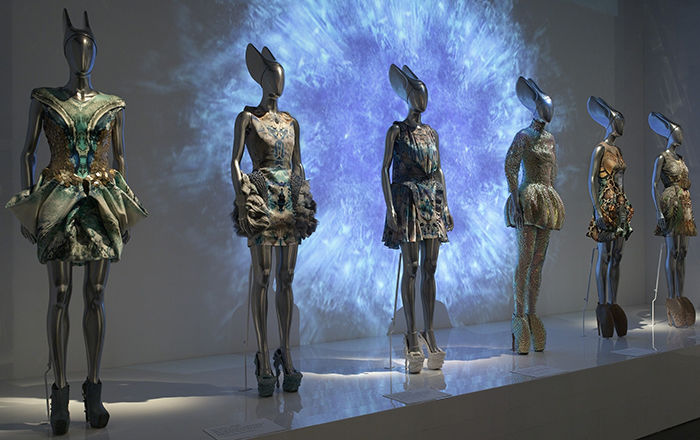Cocktail ensemble
Design House House of Chanel French
Designer Gabrielle Chanel French
Not on view
Chanel promoted jersey fabrics in 1916, as the first of many innovations for outdoor recreation and chic sportability. Her most famous introduction, which characteristically borrowed several of its constructive components from menswear tailoring traditions, was the famed "Chanel Suit." Early forms of this ensemble were promoted in her 1920s collections, with the suit jacket as a wool jersey cardigan, paired with a silk or sheer cotton blouse and a kick-pleated jersey skirt. The blouse almost always matched the jacket lining, as demonstrated in the 1960s design here. More formal incarnations of the Chanel Suit were produced in silk or linen for the cocktail hour.
Though Chanel clothing was absent from couture during World War II, the fashion house reemerged in the 1950s with its famous namesake at the helm. Postwar Chanel clothing crushed skeptics and critics with a reinterpretation of the suit, constructed from heavy wool bouclés, doublecloths, and tweeds. These textiles, manufactured by textile designers like Malhia, Burg-Linton, and Bucol, gave the suit the boxy shape and luxurious appeal that became synonymous with 1960s Chanel collections.
This suit employs a black silk and synthetic clipped pile for the jacket and skirt, with an understated ivory damask for the blouse. The black bow became a signature detail for Chanel couture before mid-century, but only with its insertion into cocktail-formal versions of the postwar Chanel Suit was the necktie truly celebrated. The luxurious textiles of the suit, paired with the designer's signature gold weight chain, made the ensemble an obvious choice for the cocktail hour. With evening-appropriate materials, the suit played on notions of day-into-evening dress that were present in the cocktail garb of 1930s café society.
This image cannot be enlarged, viewed at full screen, or downloaded.
This artwork is meant to be viewed from right to left. Scroll left to view more.







